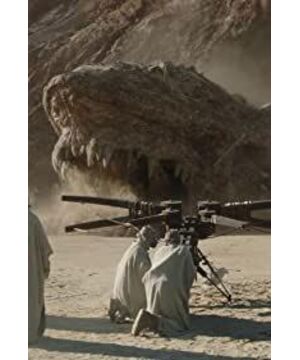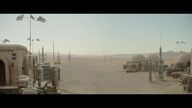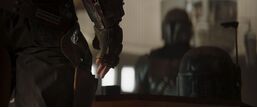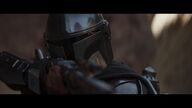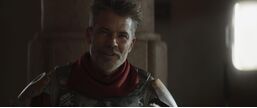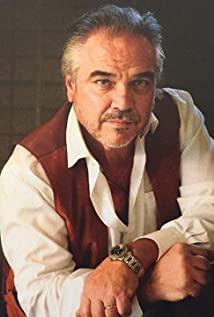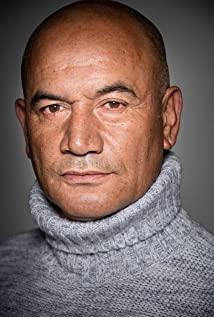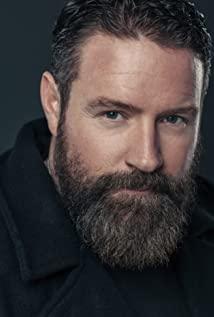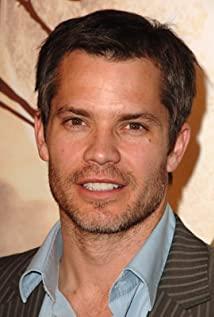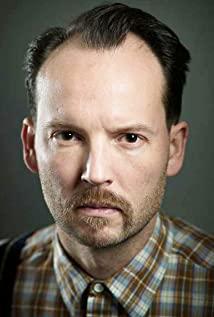Although most of the time emotion is a bad word, but sometimes you have to admit that it has terrible power. For those works with a huge fan base and deep historical accumulation, the word "feeling" means everything. Characters that have not been seen for a long time come back, familiar plots are repeated, and even props or easter eggs that seem to be displayed inadvertently are synonymous with feelings. Once there, they can keep fans in place and ignore everything else in the work. Perhaps using sentiment is not a smart approach, but it turns out to be effective enough. Simple and effective, that's enough.
In 2020, when the film and television industry is close to collapse, there is no doubt that the emotional work is "The Mandalorian". At the end of the second season, an X-Wing fighter appeared without warning in the dark, and then a Jedi in black robes turned the tide with the Force and a lightsaber. When the hood of the robe was uncovered, what appeared was Luke Skywalker's face rejuvenated by CGI technology. Cheering, screaming, dancing, and even bursting into tears, any Star Wars fan watching The Mandalorian via Disney+ will find immense satisfaction within those few minutes. Not only was it their highlight of 2020, it was the best moment since Disney took over Star Wars.
Did The Mandalorian Save the Dying Star Wars franchise? To a certain extent yes. In October 2012, Disney bought Lucasfilm for $4.05 billion, hoping to revive the venerable Star Wars IP and create another box office harvester that rivals the Marvel Cinematic Universe. But after a few years of repeated operations, the effect is unsatisfactory. "The Force Awakens" (Star Wars: The Force Awakens) as the opening of the new trilogy, although the box office hits wildly, but the plot is simply a re-enactment of "Star Wars: A New Hope" (Star Wars: A New Hope). This approach has neither gained a good reputation nor laid a foundation for future works. Without a unified plan, the next two sequels, Star Wars: The Last Jedi and Star Wars: The Rise of Skywalker, were torn between the old-fashioned and the radical innovation. Jumping has become a model for slapping each other in the face. Not only is the plot of the single film criticized, but the series is illogical. Before The Mandalorian, the entire Star Wars franchise was at an all-time low, and it seems the space opera with the Force, lightsabers, Jedi and Sith has lost its magic today. . The new era belongs to superheroes in straitjackets, not those old-school intergalactic legends.
Before "The Mandalorian" aired, how many people believed it would be successful. The road to innovation and old-fashionedness was blocked by the trilogy of sequels one by one, and old fans were maddeningly critical of the series, while new audiences simply dismissed it. Telling the story of the Skywalker family again is really a model of dog-tailed mink, and completely restarting the stove will lose the iconic gimmick of the lightsaber and the Force. "The Mandalorian" finally chose the safest path, trying to please everyone. The time of the story is set between the main story and the sequel, and the protagonists are the "Mandalorians", a family of bounty hunters who have received only a small amount of attention in the main story and the prequels. In the context of the Star Wars universe, the style of the story tends to be a tough and realistic western. In this way, it has made an organic separation from the original Star Wars universe. Older audiences can enjoy finding familiar elements, while new audiences don't have to carry too much historical baggage.
It would be an oversimplification to tell the story of The Mandalorian, because its story is so thin it is suffocating. A Mandalorian accidentally got a "baby Yoda" in the process of carrying out a bounty mission. In order to help this little friend escape from the pursuit of evil forces and find a suitable place to live, he set foot on the interstellar a long journey. The entire two seasons of "The Mandalorian" have always revolved around this story, without any superfluous parts. Even each single-episode story follows the same pattern, coming to a new location, encountering new difficulties, solving puzzles, and then heading off to the next destination. This mode is more like fighting monsters and upgrading in online games. If it wasn't for the appearance of Luke Skywalker at the beginning, this story seems to be repeated forever.
From this perspective, "The Mandalorian" is more like a scenic sightseeing film about the Star Wars universe, and the viewing process is like a theme park tour. The protagonist, The Mandalorian, is the tour guide because he doesn't need to show any facial expressions (oh yes, he wears a helmet for most of the episode). Baby Yoda is a mascot, who is responsible for playing tricks and acting cute. Occasionally, he does two silly actions to relieve tension. The biggest excitement of the trip is to find the elements hidden as easter eggs along the way. This graffiti represents which historical event happened and what kind of adventures the character has experienced in the past. The final reward is a super invincible Easter egg that has never been revealed before. Know what all this means? Yes, feelings, invincible feelings.
This isn't the first time Disney has made emotion its biggest selling point. The Marvel Cinematic Universe is a top master of using feelings. 22 movies in 2011 use the audience's time and memories to support a spring dream full of feelings. So when Avengers: Endgame wanted to wrap it up, much of the film was about revisiting those classic moments from the past. The restarted Star Wars universe has used the same trick. The most memorable passage in the well-reviewed "Rogue One" is the re-enactment of the beginning of "A New Hope" 40 years ago at the end, letting Darth Vader in With the help of new technology, it debuts again. There are also those movies that have been changed from animation to live-action several times a year, just to make the fairy tale look more real. The use of feelings has become a kind of precision-guided emotional bomb. If the cinema can send barrage, it is certain that the uniform "Ye Qing Hui" will be hit on the screen by trembling hands.
Worse still, the creative way of overusing emotions has spread like a virus in Hollywood. Just released "Wonder Woman 1984" (Wonder Woman 1984) is unconventional, not using the Easter egg link at the end to connect the universe, but letting the old version of Wonder Woman come out to show her face. If this can barely be regarded as a tribute, then the next Flash independent film will promote the same frame as the biggest selling point of several generations of Batman before filming. Next door, Sony also followed suit, releasing rumors that three generations of Spider-Man will be framed in the new Spider-Man single-player movie, with an additional bonus of the original villain, Doctor Octopus. Although it is said that mainstream commercial films never take breakthroughs and innovations as the cornerstone of their lives, is it really a good choice to consume the feelings of the past self and the audience so aggressively?
It sounds like a cliché that Hollywood is dead and lacks originality. Since the audience likes emotional routines, why can't they be used repeatedly. To answer that question one only needs to imagine the future of The Mandalorian. After the main story of the first two seasons was over and the loss of Baby Yoda, the Star Wars story about the bounty hunter returned to the question of whether or not to have a relationship with the Skywalker family. If you continue to force lightsabers, Jedi and Sith into the main line, "The Mandalorian" will face the same embarrassing situation as the sequel trilogy. To completely abandon the exploration of the light and dark of the Force, and simply tell the Star Wars story of a bounty hunter, is to cut off both arms and take the initiative to give up the most attractive qualities of the Star Wars universe. What's more, Return of the Jedi has been used once. Next time, if you want to satisfy the appetite of the audience, how many feelings are left to use?
Star Wars was by no means a franchise, as imagined by George Lucas, who created it. It is inspired by space operas in science fiction, Akira Kurosawa's samurai movies and oriental mystical elements. The original trilogy was a family romance in a space setting, and the prequel trilogy years later was about the fall of power and the ideological battle of politics. The envisioned sequel trilogy was supposed to focus on a philosophical exploration of the nature of the Force. But after being acquired by Disney, Star Wars has become synonymous with feelings, in order to sell more BB-8 models.
This article was first published on the official account of Deep Focus DeepFocus, and the text and pictures have been slightly changed.
View more about Chapter 9: The Marshal reviews


